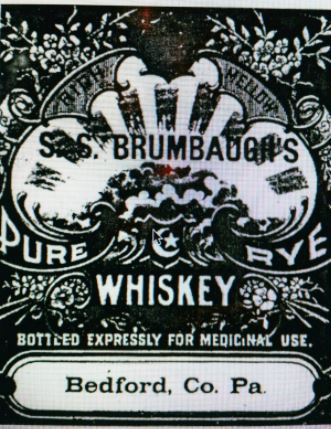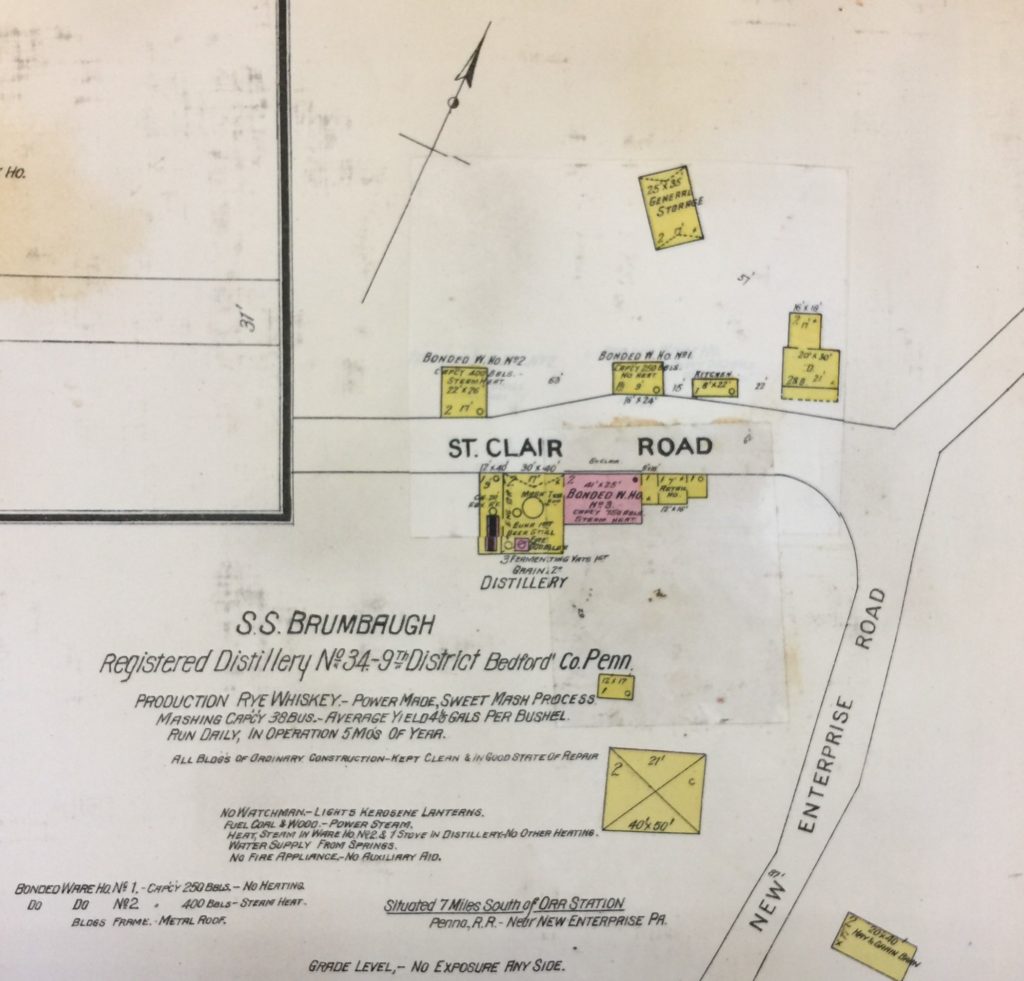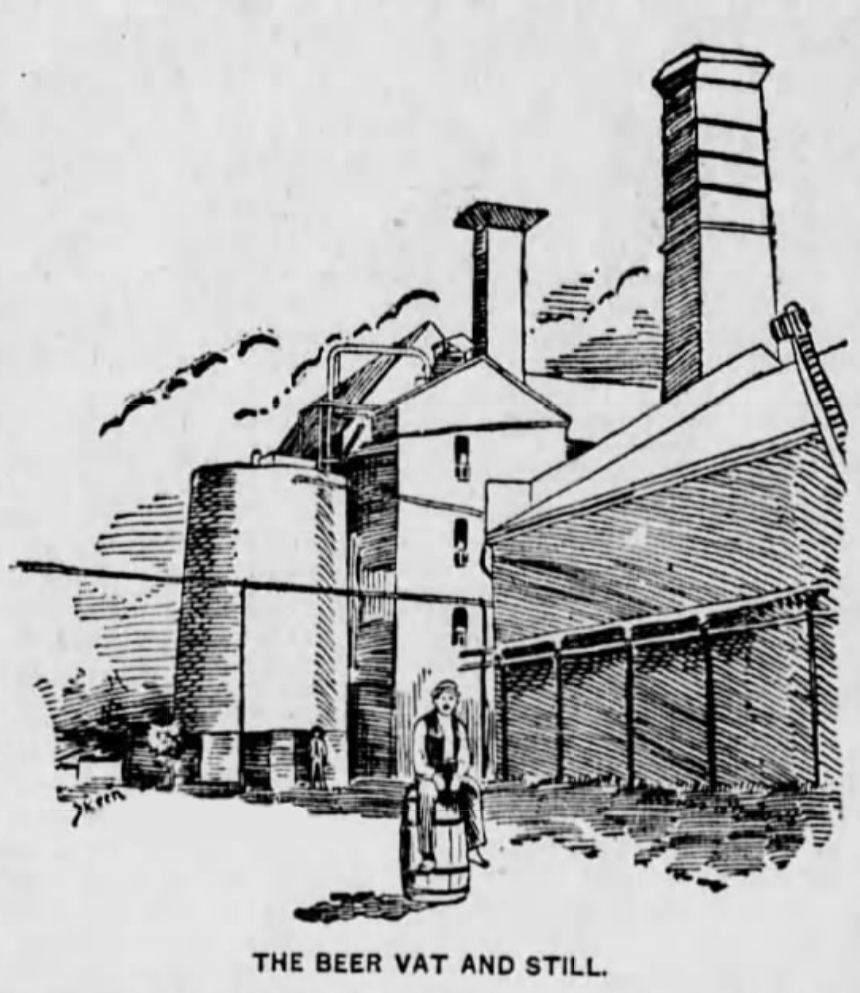I have spent the last few years researching and cataloging information on nearly 200 distilleries that produced rye whiskey across Pennsylvania before 1920. The information about Pennsylvania’s distilling history along with the traditions that established Pennsylvania as the leader in American rye whiskey production has been lost to generations of Pennsylvanians, not to mention the many new whiskey drinkers just learning about our country’s distilling heritage. I am making my best effort to reopen the history book of Pennsylvania rye whiskey and bring these distilleries back into the conversation. Bourbon is a whiskey that began its introduction to American drinkers in the early 1800s, joining the rye whiskey that had already been sitting comfortably behind the bar for 100 years.
As this is an ongoing process, I am not publishing the information until the last distillery is written about. They are all related to one another in some way and the information often dovetails. To be clear, I am ONLY writing about the distilleries that were active after the Civil War with a few exceptions. This is due to the fact that there were too few records kept before the government implemented excise taxes and installed gaugers and there were literally thousands of distilleries across Pennsylvania in the late 18th and early 19th century (approximately 1 distiller for every 15 farms). Perhaps at some later date I’ll tackle the earlier distillers that stretch back to the first settlers in Pennsylvania during the late-17th century…
If anyone has information to share about a pre-Prohibition distillery local to them, please feel free to share information. I am also happy to share any information I have on any distillery that I have researched. You can reach me at dramdevotees@gmail.com. Thank you!
Here is one example of a distillery that I have been asked about a few times…
Brumbaugh Distillery
S.S.Brumbaugh
Near New Enterprise, South Woodbury Township
Bedford County
RD# 34
9th District
“Brumbaugh whiskey,” bottled expressly for medicinal use,” was so well known that people began to identify Dunning Mountain as “Brumbaugh Mountain”—a name attached to the site a generation after the distillery closed.”
(Bible, Axe and Plow. Ben F. Van Horn, Sr. 1986)
The Brumbaugh family was one of the oldest in Bedford County. The patriarch, Johann Brumbaugh, immigrated to America from Germany in 1750, settling first in Maryland. Johann’s grandson, John, left Maryland for Pennsylvania and was an early pioneer of South Woodbury in Bedford County. He finally settled on 800 acres of wild, unimproved land near Morrison’s Cove, east of Dunning Mountain. The family may have had distilling knowledge from their native Germany, but they did not produce whiskey commercially until 1880.
Simon Snyder Brumbaugh, the third generation of Brumbaughs living in Morrison’s Cove, would make the Brumbaugh name synonymous with excellent whiskey. He purchased his distillery at the foot of Dunning Mountain from a well-known hotel owner named Aaron W. Reed. Reed built the distillery in 1860 and had produced rye whiskey there for 20 years, but Simon would modernize the facility and its whiskey making process. Simon became postmaster of his own hamlet in 1894, naming the post office “Brumbaugh.” The mountain spring water used by the distillery was excellent and the local grain was in good supply, making his location ideal. He ran his distillery 5 months of the year.
Simon’s son, Oscar, was born around the time that he bought his distillery, so it would be years before Simon could teach him the trade. In the meantime, Simon employed a distiller named John Shaffer. By the early 1900’s, however, father and son were working together at the distillery. Most of the history of the Brumbaugh Distillery and much of the information about its distilling techniques are sourced from from this period. Local newspaper ads show that Brumbaugh’s Distillery was accepting grain deliveries from local farmers. Their mash consisted of 5 parts rye grain for every 1 part roasted barley malt. Simon and Oscar cultured their own yeast, often selling it to other local distillers in need, and used it to ferment their rye mash for 3 days. The fermented mash then passed through double chambered wooden beer stills, then into a fire-heated doubler to achieve a 180 proof distillate- higher than is legal for whiskey today. Each of the 2 wooden stills held 112,090 gallons and the doubler held 150 gallons. It appears from recorded descriptions of the distillery that the whiskey was aged in very large, used cooperage- 90-104 gallon butts. It is more likely that there was a combination of containers used at the distillery that varied in size. Legally, the containers had to be at least 40 gallons to be sold by a distillery holding a wholesale liquor license after 1893.* Before going into the barrels, it is also noted; “…the Brumbaugh brew was colored artificially with a low-grade “A” sugar which was burnt to a caramel. An enticing color was the result. The longer the whiskey was aged, the deeper the color became.” The pure rye whiskey was sold by the gallon as a 2 year old for $2.25, a 6 year old for $2.50 and very old over 6 years for $3.00. The 3 bonded warehouses on site held a total of 1400 barrels- 2 were heated with steam, but the smallest was not. Steers were also raised on the property and their feed of spent mash from the distillery made them very large and valuable for sale as meat.
Most of the whiskey sold by Brumbaugh was sold by the barrel or by the jug. Bottles were not commonly used by distilleries until the late 1800s, so gallon size ceramic jugs were much more common. The distillery shipped its barrels to buyers via railroad. Simon and Oscar employed abstaining men to make the deliveries because they found some of their teamster delivery drivers “had found a method for getting a quart or two from the barrels while on their way to the railroad station.” From October to June, the distillery employees began work at 5am and kept busy all day churning out 2 to 3 barrels before their shifts ended. Some workers were paid in room and board and free liquor. Oscar, who was known to abstain from whiskey, served as salesman for the company and traveled to taverns and hotels with samples of the whiskey in bottles with white lettering that read “Brumbaugh’s Pure Rye Whiskey.” Any promotional bottles that they did sell were meant to be displayed prominently and had “S.S.Brumbaugh- Pure Rye Whiskey- Bedford Co., Pa” etched in gold on the glass.

Simon S. Brumbaugh died at the age of 64, leaving Oscar to run the distillery. Oscar Brumbaugh ran the distillery right up to Prohibition. In fact, the night before Prohibition went into effect, local residents pooled their money and purchased a common barrel, which they poured at a community gathering that night, toasting to the last of “Brumbaugh’s best.” Anecdotal evidence from interviewed locals in the late 1980’s suggests that there were still bottles that survived in the homes of local townspeople three quarters of a century later. Brumbaugh’s bottles and jugs are highly sought after collectibles today.

*The act of 20 June, 1893 gave distillers the right to sell liquors of their own manufacture in original packages of not less than forty gallons without requiring them to take out a license under the act of 1891.

